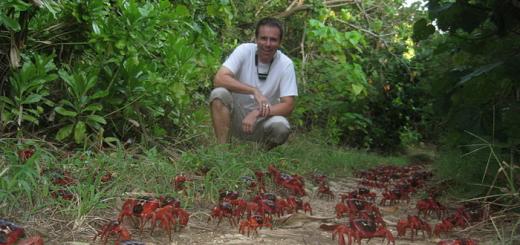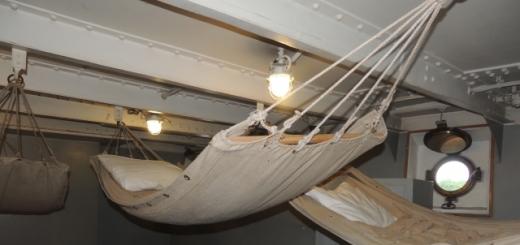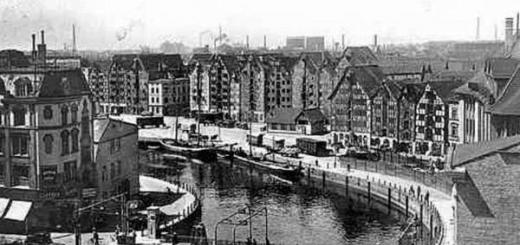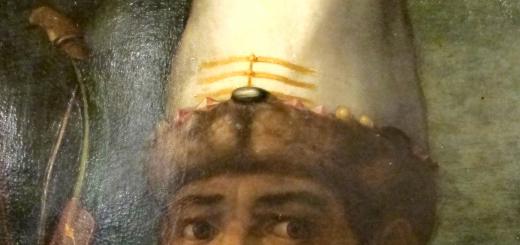The name of the national hero Ivan Osipovich Susanin is known to any Russian child of the 3rd grade. Many do not know his biography, but they know that he led someone somewhere into the impenetrable jungle. Let's take a brief look at the biography of this famous person and try to understand what is reality and what is fiction.
In contact with
It must be said that not much is known about Ivan. He was born in the Kostroma region in the village of Derevenki. According to other sources, the place of birth is the village of Domnino, which was the patrimony of the Shestov nobles. Who I. Susanin was during his lifetime is also not very clear. According to different sources there are different views:
- Generally accepted - a simple peasant;
- Little accepted - the village headman;
- Little known - Ivan Osipovich acted as a clerk and lived at the court of the Shestov boyars.
 For the first time, they learned about him in 1619 from the royal charter of Tsar Mikhail Romanov. From this letter we learn that in the fierce winter of 1612, the Polish-Lithuanian detachment of the Commonwealth appeared. The purpose of the detachment was to find the young Tsar Mikhail Fedorovich Romanov and destroy him. At that time, the tsar, together with his mother, nun Martha, lived in the village of Domnino.
For the first time, they learned about him in 1619 from the royal charter of Tsar Mikhail Romanov. From this letter we learn that in the fierce winter of 1612, the Polish-Lithuanian detachment of the Commonwealth appeared. The purpose of the detachment was to find the young Tsar Mikhail Fedorovich Romanov and destroy him. At that time, the tsar, together with his mother, nun Martha, lived in the village of Domnino.
A detachment of Poles and Lithuanians advanced along the road to Domnino and met the peasant Ivan Susanin and his son-in-law Bogdan Sobinin. Susanin was ordered to show the way to the court where the young king lives. The peasant reluctantly agreed and led the enemy in the other direction. According to the letter and legend, Ivan led them to the swamps into the impenetrable jungle. When the deception was revealed, the gentry tortured him and cut the body into small pieces. They were never able to get out of the wilds and froze in the swamps. Under the yoke of torture, Ivan Osipovich did not change his decision to destroy the enemy and did not indicate the right path.
History shows that that Susanin led the gentry, and son-in-law Sobinin went to Domnino to warn the king. The king and his mother took refuge in a monastery. Judging by the fact that son-in-law Sobinin is mentioned, it is determined that Susanin's age was about 35-40 years. According to other sources - it was an old man of advanced years.
In 1619, the tsar grants a letter to his son-in-law Bogdan Sobinin to manage half of the village and exempt from taxes. In the future, there were still salaries to the widow of Sobinin and the descendants of Susanin. Since then, the legend of the immortal feat of the Russian peasant Ivan Susanin lives and is passed from mouth to mouth.
The cult of Susanin in Tsarist Russia
In 1767, Catherine the Great traveled to Kostroma. After that, she mentions the feat that the hero accomplished and speaks of him as the savior of the tsar and the entire Romanov family.
Before 1812 little was known about him. The fact is that this year the Russian writer S. N. Glinka wrote about Susanin as a national hero, about his feat, self-sacrifice in the name of the tsar-father and the Fatherland. Since that time, his name has become the property of the entire public of tsarist Russia. He became a character in history textbooks, many operas, poems, stories.
In the reign of Nicholas I, the cult of the hero's personality intensified. It was a political light image tsarist Russia, who advocated the ideals of self-sacrifice for the sake of the tsar, autocracy. The image of a peasant hero, a peasant defender of the Russian land. In 1838, Nicholas I signed a decree renaming the main square of Kostroma into Susaninskaya Square. A monument to the hero was erected on it.
 A completely different perception of the image of Susanin was at the beginning of the formation of the power of the Soviets. He was ranked not among the heroes, but among the king's saints. All monuments to the tsars were demolished by Lenin's decree. In 1918 they began to demolish the monument in Kostroma. The square was renamed Revolution Square. In 1934, the monument was completely demolished. But at the same time, the rehabilitation of the image of Susanin as a national hero who gave his life for his homeland began.
A completely different perception of the image of Susanin was at the beginning of the formation of the power of the Soviets. He was ranked not among the heroes, but among the king's saints. All monuments to the tsars were demolished by Lenin's decree. In 1918 they began to demolish the monument in Kostroma. The square was renamed Revolution Square. In 1934, the monument was completely demolished. But at the same time, the rehabilitation of the image of Susanin as a national hero who gave his life for his homeland began.
In 1967, a monument to Ivan was re-erected in Kostroma. The photo of the monument reveals the image of an ordinary peasant in long clothes. The inscription on the monument reads: "To Ivan Susanin - a patriot of the Russian land."







The name of Ivan Susanin has been known to everyone since childhood. No wonder - after all, this is the first Russian partisan who gave his life for Mikhail Romanov and led the Poles into a swamp, where both they and he got lost. What interesting things are known about the life of this small but great man?

Surname mystery
The peasants were ordinary people, and therefore they did not have surnames for a long time. More precisely, they were given by the name of the father - hence the famous "Ivanovs", "Petrovs" and "Sidorovs" came from. The surname "Susanin" comes from a female name "Susanna", which in those days meant the illegitimacy of birth. If Ivan was born in a legal marriage, he would be Ivan Osipov, because in some sources his middle name is. However, it is impossible to say for sure about this, since this is inaccurate information.
Life for without-five-minutes of the king
According to Mikhail Glinka, composer and author of the opera Ivan Susanin: A Life for the Tsar, the feat of the Russian peasant is always called that way, although, in fact, in 1613 Mikhail Romanov was not yet king. Yes, he was a pretender to the throne, but he was crowned later.
family benefits
The only descendant of Susanin is called daughter of Antonida who married a peasant Bogdan Sobinin. The couple had two sons - Daniel and Konstantin. In 1619, Susanin's grandchildren and his son-in-law received benefits from the royal family: for the feat accomplished by their ancestor, they were exempt from taxes. Bogdan was also given half of Domnino. The last of the preferential letters was issued in 1837. The fact that this document really exists casts doubt on skeptics: if there was no Susanin, why were such honors granted to a simple peasant? There is, however, evidence that the descendants of the peasant came to the king themselves, without providing, for obvious reasons, any facts that the heroic ancestor really existed.

Where did he die?
There is no specific knowledge about the place of Susanin's death. Historians only say that it happened in the forest thicket, where the partisans led the Poles and where they unsuccessfully tortured him, hoping to extort the truth. Most likely, the peasant was heading to the village of Isupovo - it was located on the opposite side from the place of hiding of the Romanovs. Archaeological excavations were carried out here in 2003 - among the 41 found crosses, only 1 was Orthodox. The latter was twisted, indicating contact with a cutting weapon.
Where is he buried?
Although according to legend, Susanin's body was thrown into the swamp, there is information that, having ascended the throne, Mikhail Romanov ordered him to be found and buried properly. The body was found and allegedly buried in Ipatiev Monastery- but this happened 6 years after his feat, so it is doubtful that after so much time they could have found him. Most likely, the body was found even earlier and buried in the Church of the Resurrection in Domnino, his native village. Unfortunately, the church has not survived to this day.
Long road to fame
Despite the fact that Susanin did indeed commit great feat(Although Romanov was not yet king at that time), he was unknown to the general public for a long time. His fame was promoted by Catherine the Great, who visited Kostroma in 1767 and listened to the speech of the local bishop. Since then, the heroic peasant began to be talked about more often, and Sergei Glinka, the writer, finally clothed the feat in literature. It was thanks to him that all of Russia learned about the partisan. When Nicholas I was on the throne, the image of Susanin was used as example of self-sacrifice for the sake of autocracy- for the sake of the king, the only one capable of ruling a large country.

Another legend
The fame of Ivan Susanin and the reason why his descendants were granted royal privileges may be different. According to another, less popular legend, the partisan did not take the Poles to the swamp: he simply helped the future Tsar Michael hide in his house - so well that the Poles who burst in could not find him. The headman, again, was tortured, asking for information about the future king, but he did not surrender, for which he was killed. However, this version is less heroic, so it is not often remembered.
Memory
Members of the Romanov dynasty highly valued Susanin and made sure that his memory survived to this day. So, Nicholas I ordered to christen the main square of Kostroma Susaninskaya She bears this name to this day. There is also a monument to Ivan Susanin. And if we are used to such honors, then to the fact that the hero's name can become the name for a navigator store in St. Petersburg!
- There is no information about when Susanin was born, therefore it is impossible to say how old he was when he died - most likely, no more than 40. Date of death, 1613 , is also inaccurate.
- Born, most likely, Susanin in village(sometimes called "The Villages").
- Susanin's position in Domnino was listed as "patrimonial elder". He served either with the Romanovs or with the Shestovs - sources differ on this.
- There is no information about the partisan's wife, therefore, most likely, he was a widow.
- In one version of the legend, Bogdan Sobinin, his son-in-law, helps Susanin. It is believed that this mistake was made by his great-great-grandson, Ivan Lukyanovich, when Empress Anna refused to give him benefits. Apparently, the presence of as many as two heroic ancestors is the best way to confirm the right to tax exemption!
- There is no exact information in history whether Susanin died at the hands of the Poles. There were in the forests many robbers, so the Russians could just as well deal with him.
- Mikhail Glinka was not the first to put Susanin's story to music. He was ahead of him Kavos, a composer with Italian roots: his opera was written 20 years before.
- In the chronicle, dated 1612, there is a mention of another peasant who performed an identical feat. Probably, there were even more such stories, but information about this simply has not been preserved.
- In the Soviet Union, the image of Susanin was not extolled, but on the contrary, persecuted. The national hero was considered henpecked by the royal crown, the monument was ordered to be demolished, and the square in Kostroma was renamed "Revolution Square". In 1967, the monument was restored to its original location, and the square returned to its old name.
Music section publications
Two operas by Mikhail Glinka in 10 facts
Glinka's first works opened a new stage in the development of Russian musical theater. There were two compositions - "Ivan Susanin" ("Life for the Tsar") and "Ruslan and Lyudmila", and both of them predetermined the further path of the Russian national opera. We followed the fate of productions to the music of Mikhail Glinka and chose 10 little-known facts.
"Ivan Susanin" ("Life for the Tsar")
Ilya Repin. Portrait of Mikhail Glinka. 1887

Fedor Fedorovsky. Set design for the final scene of Mikhail Glinka's opera "Ivan Susanin". 1939

Set design for Mikhail Glinka's opera "Ivan Susanin". 1951. Illustration: art16.ru
1. The idea to create an opera about the feat of Ivan Susanin was proposed to Glinka by his friend Vasily Zhukovsky: “... as if by magic, the plan of the whole opera was suddenly created, and the idea of opposing Russian music to Polish music; finally, many topics and even details of the development - all this flashed in my head at once, ”the composer later recalled.
2. When working on an opera, there are certain canons: it is customary to write music, focusing on the word. However, Glinka acted the opposite, which created difficulties in creating the poetic text of the libretto. Nestor Kukolnik, Vladimir Sologub, Prince Vladimir Odoevsky and Zhukovsky himself tried to keep up with Glinka's music. But for the most part, only Baron Georg von Rosen succeeded in this. Glinka most of all appreciated in him the ability to compose words for ready-made music: “Rosen had already prepared verses laid out in his pockets, and I had to say what kind, that is, size, I need and how many verses, he took out so many of each variety, as much as needed, and each variety from a special pocket. When the size and thought [did not] fit the music and [did not] agree with the course of the drama, then an unusual obstinacy appeared in my piit. He defended each of his verses with stoic heroism.
3. The audience did not appreciate Glinka's music and even called it "peasant", "coachman", "common people". In the opera A Life for the Tsar, the composer turns to the genre of Russian folk song, trying to show the national flavor. This was alien to court listeners, accustomed to numbers in the spirit of the Italian aria. But Nicholas I was very pleased with the opera and, as a token of his admiration, gave Glinka a diamond ring.
4. After the revolution of 1917, attempts were made to change the plot of the opera and transfer it to Soviet realities: “The first edition was to transfer the time of the action to the era of the Bolshevik revolution. In accordance with this, Ivan Susanin turned to the "chairman of the village council" - to the advanced peasant standing for the Soviet homeland. Vanya was converted to a Komsomol member. The Poles remained in place because at that time there was just a war with Poland, where Tukhachevsky advanced. The final anthem was paraphrased: "Glory, glory, Soviet system" (Leonid Sabaneev. "Memoirs of Russia").

Peter Williams. Set design for Dominino for Mikhail Glinka's opera Ivan Susanin. 1939. Illustration: tamart.ru

Drawing based on Mikhail Glinka's opera "Ivan Susanin". Illustration: intoclassics.net

Fedor Fedorovsky. Set design for Mikhail Glinka's opera "Ivan Susanin". Theater named after Kirov. 1940. Illustration: megabook.ru
5. However, another production of the opera became famous - in 1939, it was based on the libretto of the poet Sergei Gorodetsky. His version of the libretto greatly changed the plot: new heroes "arrived" in the opera in the person of Minin and Pozharsky. King Sigismund sends a detachment to defeat the Russian militia. The army ends up near Kostroma, in the village where the peasant Ivan Susanin lives. The Poles demand that he show them the way to Minin's camp. The fact that Susanin saved Tsar Mikhail Fedorovich, who was in a monastery near Kostroma, was not mentioned in the new version. Moreover, in the text of the libretto there was no mention of the king at all. By Stalin's decree, the opera became known as Ivan Susanin. With such a plot and title, the composition was performed on all the opera stages of the Soviet Union.
"Ruslan and Ludmila"

Nicholas Ge. "Ruslan and Ludmila". Second half of the 19th century

Ivan Bilibin. Chernomor Palace. Set design for Mikhail Glinka's opera "Ruslan and Lyudmila". 1900. Illustration: belcanto.ru

Konstantin Somov. Lyudmila in the garden of Chernomor. On the plot of Alexander Pushkin's poem "Ruslan and Lyudmila". 1897. Illustration: belcanto.ru
1. Alexander Pushkin knew about Glinka's intention to create an opera based on his poem and was even going to help him write the libretto, because he believed that the text of "Ruslan and Lyudmila" should be changed. But what kind of changes Pushkin wanted to make, Glinka did not find out. The sudden death of the poet prevented their cooperation. Work on the opera and libretto dragged on for five years.
2. Glinka excluded ironic and frivolous scenes, focusing on the national Russian character. He gave his creation the features of epic monumentality: contrasting in content paintings slowly replace each other.
3. Glinka came up with a new orchestral technique - imitation of the psaltery in the sound of the pizzicato harp and piano. Later, Nikolai Rimsky-Korsakov used it in the operas The Snow Maiden and

Ivan Bilibin. Gardens of Chernomor. Set design for Mikhail Glinka's opera "Ruslan and Lyudmila". 1913 Illustration: belcanto.ru
5. Nicholas I defiantly left the premiere without listening to the end of the opera. And all because in the play he saw a mockery of himself. In act IV, Chernomor marches with his retinue to the sounds of a march performed by a brass military band on stage (everyone knew the emperor's love for military parades); then in the castle of Chernomor they dance a Caucasian dance - a lezginka (under the leadership of the emperor, Russia waged a protracted and far from always successful war in the Caucasus). Shortly after the premiere, the theater directorate "for the sake of economy" abandoned the military orchestra on the stage, and this was the reason for the shortening of the march in subsequent productions.
Of course, every inhabitant of our country heard about Ivan Susanin. And in terms of the number of jokes with Susanin, perhaps only Chapaev and Stirlitz can be compared. And who is Ivan Susanin really? Here are just a few stories, legends, myths about the fate of this amazing man.
According to the official version, Ivan Susanin, a village headman (and not a serf at all) from the Kostroma province, in 1613 led a Polish detachment looking for a new Tsar Mikhail Romanov into impenetrable swamps, where the conquerors died, and Susanin himself was brutally murdered.
To understand what the young king was doing in a remote village, let's go back to history. In 1605, Tsar Boris Godunov died, and the throne was taken by a series of one-day rulers, Fyodor Godunov, False Dmitry I, Vasily Shuisky ... a period of "troubled times" began in the country. After a famine, a series of uprisings and lost battles, a period called the Seven Boyars began, since everything ended in the country, even sovereigns. At this moment of crisis, the Zemsky Sobor (a meeting of city representatives) was convened and the first representative of the Romanov family, Mikhail Romanov, was elected to reign. Before that, the Romanovs, who were in disgrace at that time, lived in the patrimonial village of Domnino, where Ivan Susanin was the headman.
So why did the Poles need a Russian tsar? It's simple - at that time, Russian troops were bled dry by the war with the Commonwealth, and the young Russian tsar could become an excellent trump card for enemies in negotiations for surrender.
Since then, the Romanovs have glorified the patriot-peasant in every possible way, who saved the young Mikhail Romanov at the cost of his own life.
Nicholas I especially tried in the 19th century. It was during the years of his reign that the main square of Kostroma was named Susaninskaya, on which a monument to the legendary hero was erected.
By the way, soon after the death of Susanin, his relatives reminded the king of their existence. The son-in-law of the hero Bogdan Sobinin turned to Tsar Mikhail with a request not to bypass the descendants of Susanin with royal mercy. In 1619, Sobinin received in his possession the village of Dominino in the Kostroma district. Mikhail freed him from all taxes: "For service to us and for blood, and for the patience of his father-in-law Ivan Susanin."
“By the grace of God, we, the great sovereign, tsar and grand duke Mikhailo Fedorovich, autocrat of all Russia, by our royal mercy, and by the advice and petition of our mother, the empress, the great old woman nun Marfa Ivanovna, granted us the Kostroma district, our village of Domnina, peasant Bogdashka Sobinin, for service to us and for blood, and for the patience of his father-in-law Ivan Susanin: how we, the great sovereign, tsar and grand duke Mikhailo Fedorovich of all Russia in the past 121 (that is, in 1613 from the Nativity of Christ!) year were in Kostroma, and at that time Polish and Lithuanian people came to the Kostroma district, and Lithuanian people confiscated his father-in-law, Bogdashkov, Ivan Susanin at that time and tortured him with great, unreasonable tortures and tortured him where at that time we, the great Sovereign, Tsar and Grand Duke Mikhailo Fedorovich of All Russia were, and he was Ivan, knowing about us, the great sovereign, where we were at that time, enduring unreasonable tortures from those Polish and Lithuanian people, about us, the great sovereign, by those Polish and Lithuanian He didn’t tell people where we were at that time, but the Polish and Lithuanian people tortured him to death.
And we, the great sovereign, the tsar and the grand duke Mikhailo Fedorovich of all Russia, granted him, Bogdashka, for the service of his father-in-law Ivan Susanin to us and for the blood in the Kostroma district of our palace village of Domnina, half of the village of Derevnishch, on which he, Bogdashka, now lives, one and a half four of the land was ordered to be whitewashed from that semi-village, and one and a half four of the land was ordered to be whitewashed on it, on Bogdashka, and on his children, and on our grandchildren, and on our great-grandchildren, no taxes and feed, and carts, and all sorts of canteen and grain stocks , and in urban handicrafts, and in mostovshchina, and in others, they did not order any tax to imati from them; they ordered them to whitewash that half of the village in everything, both for their children and grandchildren, and for the whole family immobile. And there will be our village of Domnino in which the monastery will be in return, that half of the village of Derevnishch, one and a half four of the land in which the monastery with that village was not ordered to be given, they ordered, according to our royal salary, to own it, Bogdashka Sobinin, and his children, and grandchildren and unmoved into their generation forever. This is our royal charter in Moscow in the summer of 7128 (from the Nativity of Christ - 1619) November on the 30th day.
Interestingly, for another 200 years, the descendants of the hero were given letters of commendation confirming their benefits, following the model of the royal letter of 1619.
Little is known about the biography of Ivan Susanin himself. No one can even say how old the hero was at the time of his feat. As a rule, Susanin is portrayed as a kind of gray-haired old man, although there is evidence that Susanin's daughter Antonida was 16 years old at that time, and Ivan Osipovich himself, according to some historians, was 35-40 years old.
For many years, researchers have been interested in the question: where was the dead place where Susanin brought enemies, and was his grave preserved? Although, finding the grave of Susanin is an almost impossible task, because, according to legend, he died along with the Poles. Nevertheless, at the beginning of our century in the Kostroma region there were purposeful searches for the remains of the savior of the royal dynasty.
Historians, archaeologists, criminologists conducted a grandiose study: 360 remains were found and studied in the area of the village of Isupovo, not the place of the supposed death of the national hero. A comparative analysis of the DNA of Susanin's descendants with the finds of the 17th century was carried out. It may seem surprising, but the members of this expedition are sure that Susanin was buried there. Forensic analysis of the remains of one of the men confirms this.
It is interesting that not only streets and squares in our country bear the name of Susanin. For example, in St. Petersburg, a store of ... navigators is named after the legendary hero.
31.03.2017
There are such names that, it would seem, are on everyone's lips - at the same time, we know very little about a person and his life, with the exception of the name. These words can rightfully be attributed to the personality of Ivan Susanin. What do we know about him? What genuine interesting facts about the fate and feat of the national hero Ivan Susanin can we remember? It turns out that today a lot is already hidden from us in the mists of time - and, alas, almost no sources have been preserved.
- The feat of Ivan Susanin for a long time was voiced as "Life for the Tsar." But was Mikhail Romanov already elected to the kingdom when Susanin saved the young man from the hands of the Polish invaders? It is quite possible that not yet - Ivan Susanin led the Poles into the thicket either at the end of 1612, or at the beginning of 1613. If the first date is correct, it turns out that Mikhail remained only Mr. Susanin, but not the Autocrat of All Russia.
- The patronymic of Ivan Susanin was "assigned" in the 19th century - Osipovich. There are no reliable sources that would certify its authenticity. It is possible that historians and writers simply invented it.
- According to a number of surviving documents, Susanin was the patrimonial elder of the Romanovs, in charge of his ancestral village of Domnino.
- The reality of the feat of the Kostroma peasant, in which they began to doubt, is confirmed by the fact that Susanin’s son-in-law Bogdan was granted a personal letter from Tsar Mikhail himself, where it was said something like this: “For blood, for patience, for our salvation, we grant Bogdashka and his family half of the village, freeing him from all tributes. If there were no feat, would a simple peasant (and, probably, a serf) be awarded such favors from the royal shoulder?
- Susanin was most likely a widower, since there is no mention of his wife anywhere. About his relatives, it is only known for certain that he had a daughter, Antonida, and therefore royal gratitude extended not to male offspring, which was not there, but to Susanin's daughter and son-in-law.
- It is still unknown where Ivan Susanin died. Some sources indicate a forest thicket. Others call the village Isupovo, a place near the church. According to the latest version, Ivan, taking the Poles away from the place of shelter of the mother and son of the Romanovs, led them in the opposite direction and brought them to Isupov, where he revealed his plan to the enemies. His death turned out to be terrible and painful: the enraged Poles tortured him and then executed him.
- Little was known about Susanin's feat until the 18th century. Catherine the Great contributed to the widespread dissemination of information about this amazing person. Arriving once in Kostroma, she noted as a very talented speech of the Kostroma bishop Damaskin, who spoke about Susanin. Since that time, the name of a peasant who gave his life for the Tsar and the Fatherland began to sound more and more often in historical sources.
- We all know Mikhail Glinka's opera A Life for the Tsar. But it turns out that the first piece of music on this subject was written 20 years earlier - this is an opera by the composer of Italian origin Cavos.
Ivan Susanin was a simple man - a peasant, hardly close to the struggle for the throne and court intrigues. His feat was accomplished not out of ambitious motives, not with the aim of distinguishing, if not himself, then at least offspring, to raise his family to a higher rung of the social ladder. It was the self-sacrifice of a man who consciously gave his life for the freedom of the Motherland, in order to drive away the hated invaders. A low bow from us, descendants, to the national hero Ivan Susanin, and may his memory be forever preserved for centuries.










